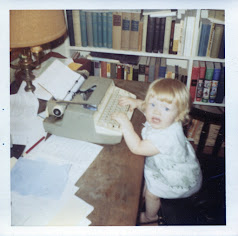 |
| Riverside Church 2013 |
In the 17th installment of my grandfather's story things are changing again...
During the 3 years that I lived on the Columbia campus, I attended Fosdick's Riverside Church, just a few blocks away from my dormitory. I became an usher there, but since I did not possess striped trousers and a morning coat I was not allowed to usher on the main floor but was assigned to the balcony! I also joined the Men's Club and attended its weekly dinners. This was the prelude to fortuitous happening #3, for there I became acquainted with a man who later was responsible for my having the opportunity to go to Chicago. This began with a phone call from an attorney in New York who said that he knew of an opening in Chicago that might be of interest to me and would I care to come to his office in Rockefeller Center to discuss it. He gave his address as the top floor of Rockefeller Center. I happened to be working on an audit of American Cynamid in that same building, so at 10 the next morning I went up to the top floor and only then realized whose attorney my caller was, for over the arched doorway was the name: John D. Rockefeller, Jr.
Although he attended services at the Riverside Church, I had never met Mr. Rockefeller but I had seen him there. His attorney explained that the opening was Financial Secretary of a place called the Oriental Institute, one of the graduate schools of the University of Chicago. Mr. Rockefeller personally and three of his family's foundations were supporting the work of archaeologist James Henry Breasted, the head and founder of the Institute. If I was interested he would have me meet Mr. Breasted's son Charles, Executive Secretary of the Institute who was then at a hotel a few blocks away. I expressed interest (although at that point it was mostly curiosity) so the attorney then handed me an envelope addressed to Charles and suggested that I walk over to where he was staying. I learned later from Charles that the message in the envelope was, "Here is your man".
Charles was a handsome 6½ feet tall, in his 30s, married (2nd time) to Martha Greenway, the daughter of Congresswoman Greenway, whose family ranch comprised most of the state of Arizona. He looked and talked like an actor, didn't give me much opportunity to talk so I listened and was attracted to his beautiful description of the far-flung operations of the institute in the Near East. I promised to think about the position and let him know whether I was interested enough to come to Chicago to learn more about it. I talked it over with Dagmar. We were then bombarded, every couple of days, with long telegrams urging me to visit the Institute. About two weeks later I went to Chicago by train.
I arrived early so had time to tour the campus on my own but with the help of my knowledgeable taxi driver who, although he didn't always know the name of a building, knew what went on in them. He described the Lying-In Hospital as "that place where they get the babies." I was impressed by the University's handsome Gothic limestone buildings, library, medical school and hospitals, nursery, grade and high schools, and the surrounding theological seminaries; and as well with the fine Oriental Institute building which housed its museum, staff, editorial and administrative offices. It all lived up to Charles' vivid descriptions as we toured the building and later at lunch in the high rise apartment where for the fist time in my life I was confronted by an artichoke!
So I returned to East Orange and conveyed my enthusiasm to Dagmar. We decided to make the change. When I informed the Personnel Manager at Peat, Marwick, Mitchell of this he asked me to see and talk with Douglas Dewar who was the top partner of the firm. He expressed concern, said an educational institution would provide me with little challenge, said that if I stayed with PMM in 10 years they would be paying me $75,000 per annum. I replied that 10 more years of the PMM pace would probably kill me. When he realized that I was determined to leave, Mr. Dewar said, "you have nothing to fear; just remember that you know twice as much as most of the fellows you will meet out there". My friend, Mike Berrien, VP of the Hanover Bank, I thought I was foolish, too. But I stuck with our decision and an audit of the Federal Reserve Bank of NY, in which I was then involved, was the last I was to do for PMM. I left the firm with a check in hand for all the overtime I had endured.
Some items of interest from old records: The rent for our first apartment in East Orange was $65 per month but when the depression hut us we moved to one at $45; our food budget had to be reduced from $50 to $40 per month. Commuting to New York cost $7.86 per month. In 1933-34 we had the courage to dabble in the stock market. Three stocks that cost us $782 we later sold for $1,292! $230 of this windfall went into a second-hand 2-door Chevy. The cost of our initial furniture was $669.14. Many of the items we still have: the maple bedroom set, the desk and chair in the study; our first dining room table is now in use by the Curate of Holy Trinity (in Middletown, CT).
Next time - Work at the Oriental Institute and a trip to the Near East.



















